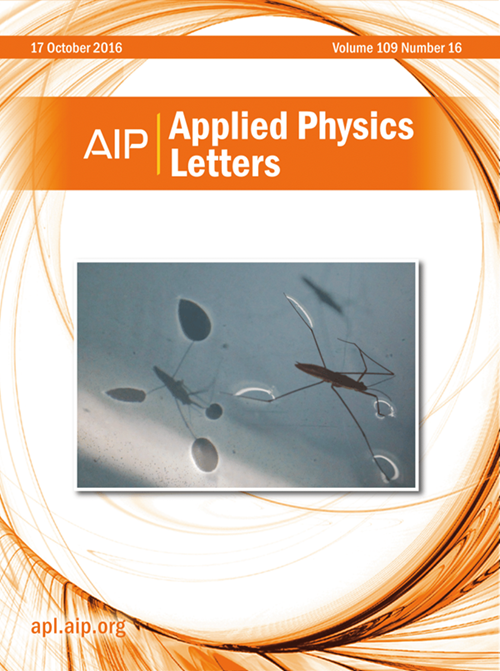Strain-engineering spin-valley locking effect in altermagnetic monolayer with multipiezo properties
IF 3.5
2区 物理与天体物理
Q2 PHYSICS, APPLIED
引用次数: 0
Abstract
Recently, altermagnetism (AM) in condensed matter systems has attracted much attention due to the physical properties arising from alternating spins in both real space and reciprocal space. In our work, we propose a stable monolayer Janus Nb2SeTeO with altermagnetic ground state and spin-valley locking (SVL) effect. The monolayer Janus Nb2SeTeO exhibits a multipiezo effect with a large out-of-plane piezoelectricity and piezovalley effect with large valley polarization. The piezovalley effect is induced by uniaxial strain effect in different directions, which contributes the anomalous valley Hall effect (AVHE) observed in AM systems. Moreover, compressive uniaxial strain could induce quantum anomalous Hall effect (QAHE) in the AM system, where the dissipationless topological edge states' chirality could be manipulated by the direction of uniaxial strain. These manifest topological phase transitions could be realized via piezovalley effect in the AM system. Furthermore, the AM quantum spin Hall effect (QSHE) could be induced by biaxial strain effect, which contributes quantized spin Hall conductance. Our work reveals that strain-engineering technique could serve as an important method to tune dissipationless edge states in monolayer Janus Nb2SeTeO. By designing the SVL effect, topological physics could be emerged in AM systems such as AVHE, QAHE, and QSHE.求助全文
约1分钟内获得全文
求助全文
来源期刊

Applied Physics Letters
物理-物理:应用
CiteScore
6.40
自引率
10.00%
发文量
1821
审稿时长
1.6 months
期刊介绍:
Applied Physics Letters (APL) features concise, up-to-date reports on significant new findings in applied physics. Emphasizing rapid dissemination of key data and new physical insights, APL offers prompt publication of new experimental and theoretical papers reporting applications of physics phenomena to all branches of science, engineering, and modern technology.
In addition to regular articles, the journal also publishes invited Fast Track, Perspectives, and in-depth Editorials which report on cutting-edge areas in applied physics.
APL Perspectives are forward-looking invited letters which highlight recent developments or discoveries. Emphasis is placed on very recent developments, potentially disruptive technologies, open questions and possible solutions. They also include a mini-roadmap detailing where the community should direct efforts in order for the phenomena to be viable for application and the challenges associated with meeting that performance threshold. Perspectives are characterized by personal viewpoints and opinions of recognized experts in the field.
Fast Track articles are invited original research articles that report results that are particularly novel and important or provide a significant advancement in an emerging field. Because of the urgency and scientific importance of the work, the peer review process is accelerated. If, during the review process, it becomes apparent that the paper does not meet the Fast Track criterion, it is returned to a normal track.
 求助内容:
求助内容: 应助结果提醒方式:
应助结果提醒方式:


